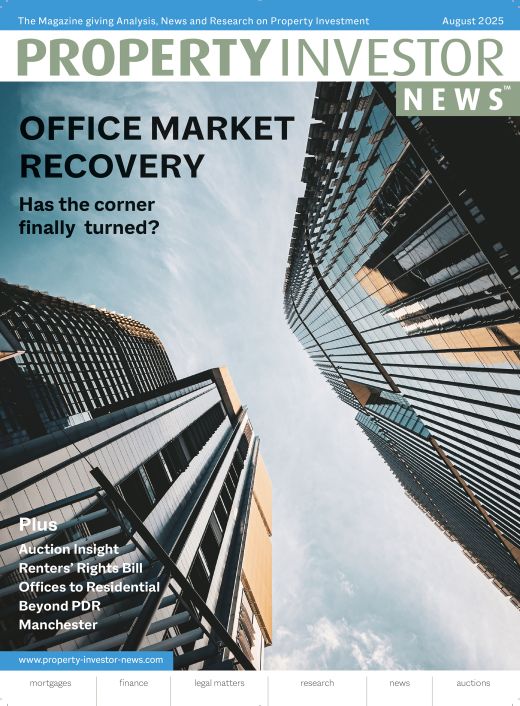The landscape of UK property investment is an evolving one. Success is no longer simply tied up in what you buy, but in how you buy. With rental yields varying across regions and price inflation constantly squeezing capital, it’s no wonder that investors are seeking smarter workflows that help streamline and guide their investment decisions.
The emergence of new technologies marks a real turning point in how fast-thinking, savvy investors are approaching new investment opportunities. With the right workflows, investors can compare affordability metrics, price per square foot, high yield cities, and sustainable tenant demand to better understand long-term profitability - they’re better equipped to understand longer term profitability.
In this article, we will outline the three-step property investment strategy for driving smarter outcomes, especially in UK hotspots like Manchester, Liverpool, and Newcastle.
Step 1: Defining Investment Criteria
Traditionally, investors would focus on headline property prices. However, today, those figures rarely reveal the true cost of a property. This is where price per square foot (PPSF) becomes a critical tool for property investors. PPSF offers an accurate value comparison across properties, neighbourhoods and cities, stripping away irrelevant data and highlighting unrealised opportunities.
Calculating the value of a house per square foot can vary the average property price dramatically, providing helpful insights into true property value that investors can take advantage of.
This is particularly impactful for investors with budgets of £100,000-£200,000 as it opens the door to greater opportunities and rental leverage in regional markets.
Why Does it Matter?
A higher price per square foot in cities like London, for example, doesn’t just make entry into investment opportunities harder; it amplifies exposure to price corrections.
Whereas a lower price per square foot in city locations offers up more space for less money, helping investors achieve more and benefit from higher resilience.
Analysing price per square foot when looking to invest in property can help assess a property’s:
- Affordability vs space
- Renovation return on investment potential
- Comparative market saturation
For property investors keen to make their money go further, calculating the price per square foot is essential for achieving investment goals.
Step 2: Targeting High-Yield, High-Growth Northern Cities
Beyond property affordability, the core of smart property investment advice is centered around targeting high-yield, high-growth cities. Smart investors are fast realising the investment potential in the north of England, where supply and demand are favourable and potential future growth is on a continual upward trend.
Let’s take a look at the three northern cities leading the investment race in terms of popularity:
- Liverpool
Liverpool continues to outperform other UK cities with a greater return on investment, attracting steady tenant demand and producing high rental yields. This is due to a combination of low price per square footage and low cash-on-cash returns, making Liverpool an attractive investment destination for many investors.
According to Advantage Investment, city-wide Liverpool averages a gross yield of 6-7%, something exceeding 10% in especially high-demand zones.
- Manchester
Manchester remains a powerhouse for northern property investment, perfectly balancing yield with capital growth. A combination of MediaCityUK, HS2-adjacent developments, and a growing digital economy are fuelling tenant demand and price resilience, making Manchester a stable long-term investment destination.
Research shows that the mean gross rental yield for Manchester is 5.59%, making it a popular location for property investment.
- Newcastle
Newcastle is home to two universities, making it a hub for students from all over the world. The city also has a fast-growing healthcare sector, ever-improving transport links, and a thriving population. Property investors typically see a high return on investment when purchasing properties in Newcastle with the intention of renting to students, NHS staff, and regional commuters. NE1 postcodes in particular have an average rental yield of 9.5%.
How to Select a High-Yield, High-Growth City
When selecting a target city for your property investment venture, the decision should primarily be data-driven - rather than driven by popularity or intuition. This allows for a more accurate and informed decision and is more likely to generate higher returns.
Here are a few key things to consider:
Yield vs Price Per Square Foot - Calculating yield vs PPSF helps identify cities with a low entry price, ultimately translating into strong rental income efficiency.
Vacancy Rates and Tenant Demand - Where there are low vacancy rates, this indicates fast turnovers and consistent rental income. High vacancy rates can be a sign that there is oversupply, making it harder to secure long-term tenants and profitable rental yields.
Infrastructure and Job Growth - Where investment properties are close to employment hubs, such as universities, transport links, and tech parks, there is a higher potential for sustained tenant demand and long-term capital growth.
Regulatory Landscape - Property restrictions can limit investment opportunities such as redevelopment or multi-unit lettings. These can affect net yield (by imposing costs and limiting flexibility) and should be factored into long-term investment decisions.
Step 3: Map Out the Acquisition-to-Profitability Workflow
Once you have identified a location you want to target, the next step is to create a repeatable workflow that guides the property acquisition process through profitability planning.
Here’s what that structure might look like:
Research and Shortlist Properties
This is the fun part. Using digital tools, you can analyse micro-market PPSF trends, identify areas with undervalued properties, and screen for local rent benchmarks. This can help set the foundation for potential investment opportunities.
Valuation and Cost Analysis
The easiest way to evaluate property values and costs is to create a spreadsheet and calculate:
- Gross yield = annual rent ÷ purchase price
- Net yield = (Annual rent – costs) ÷ total capital outlay
- Refurbishment cost per sq ft (benchmark £30–£80/sq ft for light–moderate works)
- Break-even rent
Ideally, the above should be compared against:
- Area rental comps
- Void risk (you can track postcode-level tenant demand)
- Property condition and EPC compliance
Profitability Forecasting
Next, you want to layer in your exit and holding strategy. This means calculating a property’s long-term rental income over 3-5 years as well as uncovering capital appreciation forecasts and taxation models (corporate vs personal ownership).
Note: It’s important to put contingency buffers in place to protect against interest rate fluctuations and repairs.
Execute the Plan
To execute your investment plan, you must ensure your team includes a mortgage broker (ideally with buy-to-let experience), a letting agent (for demand validation), a surveyor or architect, and a local authority legal expert. With the right team to support you, you’re set-up to make informed and confident investment decisions.
As you can see, taking the time to set the right foundations can drastically de-risk your property investments and help you scale a profitable portfolio over time.
Rethink Your Property Investment Strategy with the Right Workflow
As property investors in 2025 steam ahead with expanding their property portfolios, we hope our 3-step workflow helps you move forward with clarity, discipline, and data-led decision making.
Whether you’re a first-time property investor or you’re looking to build out your property portfolio, it’s never too early to rethink and improve your investment strategy.
By embedding these steps into your current workflow and leveraging the right digital tools, you can navigate the complexities of property investment with confidence and find high-yield opportunities in high-growth markets.
NB: This content was produced in partnership with PropertyData.




















